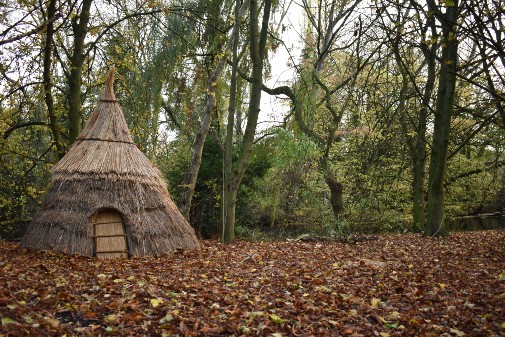Hunter-gatherers kept an 'orderly home' in the earliest known British dwelling, study shows
Posted on 23 July 2024
 Star Carr provides the earliest known evidence of British dwellings and some of the earliest forms of architecture.
Star Carr provides the earliest known evidence of British dwellings and some of the earliest forms of architecture.
The research team from the University of York and the University of Newcastle, looked at microscopic evidence from the use of stone tools found inside three structures - potentially cone-like in shape or domed - dating to over 11,000 years ago at the Star Carr site.
They found that there was a range of activities that were likely to have taken place inside the ‘home’, including wood, bone, antler, plant, hide, meat and fish related work. The researchers then plotted out spatial patterns for these activities to pin-point where within the dwelling these activities might have occurred.
Distinct areas
Dr Jess Bates, from the University of York’s Department of Archaeology said: “We found that there were distinct areas for different types of activity, so the messy activity involving butchery, for example, was done in what appears to be a designated space, and separate to the ‘cleaner’ tasks such as crafting bone and wooden objects, tools or jewellery.
“This was surprising as hunter-gatherers are known for being very mobile, as they would have to travel out to find food, and yet they have a very organised approach to creating not just a house but a sense of home.
“This new work, on these very early forms of houses suggests, that these dwellings didn’t just serve a practical purpose in the sense of having a shelter from the elements, but that certain social norms of a home were observed that are not massively dissimilar to how we organise our homes today.”
Clean home
Previous work has also shown that there is evidence that hunter-gatherers kept their dwellings clean, as well as orderly, with indications that sweeping of the inside of the structure took place.
Star Carr provides the earliest known evidence of British dwellings and some of the earliest forms of architecture. One of the structures found was believed to be shaped like a cone and was constructed out of wood from felled trees, as well as coverings possibly made from plants, like reeds, or animal hides. There is still very little known about why hunter-gatherers would build such structures and continued to throughout the Mesolithic period.
Micro-scale analysis
Dr Bates said: “Not only do we now know that hunter-gatherers were constructing these dwellings, but they had a shared group understanding of how to organise tasks within them.
“In modern society we are very attached to our homes both physically and emotionally, but in the deep past communities were highly mobile so it is fascinating to see that despite this there is still this concept of keeping an orderly home space.
“This study shows that micro-scale analysis can be a really exciting way of getting at the details of these homes and what these spaces meant to those who lived there.”
The research is published in the journal PLOS One.
Further information:
The University of York researchers and York Museums Trust are set to construct a reproduction of an 11,000-year-old home to help visitors understand what it was like to live in the Mesolithic period. They will use traditional techniques and materials, such as stone tools and plants that would have been used at the time.
Construction is set to commence on 7 August, with people able to visit the house, in front of the Yorkshire Museum, until 1 September.
The build is linked to an exhibition currently running at the museum called Life After the Ice, where people can learn more about the Star Carr site.
Explore more news

Researchers use robotics to find potential new antibiotic among hundreds of metal complexes
Tuesday 23 December 2025

Text messages could be key to helping TB patients quit smoking, according to study
Monday 22 December 2025

Teenage niece may have shaped Jane Austen’s Persuasion, new study suggests
Monday 22 December 2025

Project to examine how AI is changing the way science is done
Wednesday 17 December 2025

Researcher leads global push to cut tobacco harms in people with mental ill health
Monday 15 December 2025
